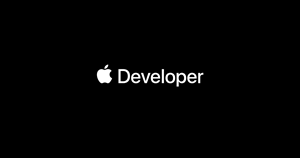Mastering Asynchronous Programming in iOS: A Guide to Swift Concurrency
December 2, 2024, 4:46 pm
Asynchronous programming is the backbone of modern applications. It’s the oil that keeps the engine running smoothly. In the world of iOS development, mastering this art is crucial. Without it, apps can feel sluggish, and users may abandon them faster than a sinking ship.
Imagine standing in line for coffee. If the barista prepares each order one by one, the line moves at a snail's pace. But if one person brews coffee while another takes orders, the process speeds up. This is the essence of asynchronous programming. It allows tasks to run in the background, keeping the user interface responsive and the experience seamless.
In iOS, developers have several tools at their disposal for handling asynchronous tasks. From the traditional Grand Central Dispatch (GCD) to the modern Swift Concurrency, each method has its strengths and weaknesses. Let’s dive into these approaches and discover how to harness their power effectively.
GCD is like the Swiss Army knife of iOS development. It’s versatile and built into the system, but it can be tricky if not used carefully. GCD allows developers to run tasks in the background and return to the main thread for UI updates.
Consider a scenario where your app needs to fetch data from a server. Using GCD, you can easily set up the task:
```swift
func fetchAppData(completion: @escaping ([AppData]) -> Void) {
DispatchQueue.global(qos: .userInitiated).async {
let data = loadDataFromServer() // Fetch data
DispatchQueue.main.async {
completion(data) // Update UI
}
}
}
```
This code snippet shows how GCD works. The data is fetched in the background, and once it’s ready, the UI is updated on the main thread. However, developers must remember that any UI updates must occur on the main thread. Forgetting this can lead to crashes or erratic behavior.
GCD shines with simple tasks. It’s fast and efficient, but it requires careful management of threads. If your app has complex tasks, GCD can quickly become a tangled web of callbacks.
When tasks depend on one another, OperationQueue is the way to go. It’s like a well-organized kitchen where each chef knows their role. If one task must finish before another starts, OperationQueue handles that gracefully.
For example, if your app needs to download and then process an image, you can set it up like this:
```swift
let downloadOperation = DownloadImageOperation(url: imageURL)
let resizeOperation = ResizeImageOperation()
resizeOperation.addDependency(downloadOperation) // Resize after download
let queue = OperationQueue()
queue.addOperations([downloadOperation, resizeOperation], waitUntilFinished: false)
```
This approach allows you to manage dependencies easily. You can ensure that the image is downloaded before attempting to resize it. OperationQueue is great for complex tasks with clear dependencies, but it can be more cumbersome than GCD for simpler tasks.
Swift Concurrency is the new kid on the block, and it’s changing the game. It simplifies asynchronous programming, making it more readable and intuitive. Instead of dealing with nested callbacks, you can write code that looks synchronous but runs asynchronously.
For instance, consider fetching user permissions and app data:
```swift
func fetchUserPermissionsAndApps() async throws -> [AppData] {
let permissions = try await fetchUserPermissions()
guard permissions.contains(.accessToApps) else {
throw NSError(domain: "AccessDenied", code: 403, userInfo: nil)
}
return try await fetchAppList()
}
```
This code reads like a straightforward sequence of actions. You can see the flow clearly, which makes it easier to understand and maintain. Swift Concurrency allows developers to write cleaner, more manageable code, making it the preferred choice for new projects.
When deciding which approach to use, consider the complexity of your tasks. If you’re working on a simple app with minimal asynchronous needs, GCD might suffice. For more complex scenarios with dependencies, OperationQueue is a solid choice. However, if you’re starting a new project, Swift Concurrency is the way to go. It’s modern, efficient, and designed for the future of iOS development.
Asynchronous programming is not just a technique; it’s a philosophy. It’s about creating responsive, user-friendly applications that keep users engaged. By mastering GCD, OperationQueue, and Swift Concurrency, developers can ensure their apps run smoothly and efficiently.
The landscape of iOS development is evolving. Swift Concurrency is leading the charge, making asynchronous programming accessible and manageable. Embrace these tools, and your future self will thank you. The world of asynchronous programming is no longer a daunting maze; it’s a well-lit path to success.
So, whether you’re brewing coffee or coding an app, remember: efficiency is key. Choose your tools wisely, and watch your applications thrive.
Imagine standing in line for coffee. If the barista prepares each order one by one, the line moves at a snail's pace. But if one person brews coffee while another takes orders, the process speeds up. This is the essence of asynchronous programming. It allows tasks to run in the background, keeping the user interface responsive and the experience seamless.
In iOS, developers have several tools at their disposal for handling asynchronous tasks. From the traditional Grand Central Dispatch (GCD) to the modern Swift Concurrency, each method has its strengths and weaknesses. Let’s dive into these approaches and discover how to harness their power effectively.
GCD: The Old Reliable
GCD is like the Swiss Army knife of iOS development. It’s versatile and built into the system, but it can be tricky if not used carefully. GCD allows developers to run tasks in the background and return to the main thread for UI updates.
Consider a scenario where your app needs to fetch data from a server. Using GCD, you can easily set up the task:
```swift
func fetchAppData(completion: @escaping ([AppData]) -> Void) {
DispatchQueue.global(qos: .userInitiated).async {
let data = loadDataFromServer() // Fetch data
DispatchQueue.main.async {
completion(data) // Update UI
}
}
}
```
This code snippet shows how GCD works. The data is fetched in the background, and once it’s ready, the UI is updated on the main thread. However, developers must remember that any UI updates must occur on the main thread. Forgetting this can lead to crashes or erratic behavior.
GCD shines with simple tasks. It’s fast and efficient, but it requires careful management of threads. If your app has complex tasks, GCD can quickly become a tangled web of callbacks.
OperationQueue: The Task Manager
When tasks depend on one another, OperationQueue is the way to go. It’s like a well-organized kitchen where each chef knows their role. If one task must finish before another starts, OperationQueue handles that gracefully.
For example, if your app needs to download and then process an image, you can set it up like this:
```swift
let downloadOperation = DownloadImageOperation(url: imageURL)
let resizeOperation = ResizeImageOperation()
resizeOperation.addDependency(downloadOperation) // Resize after download
let queue = OperationQueue()
queue.addOperations([downloadOperation, resizeOperation], waitUntilFinished: false)
```
This approach allows you to manage dependencies easily. You can ensure that the image is downloaded before attempting to resize it. OperationQueue is great for complex tasks with clear dependencies, but it can be more cumbersome than GCD for simpler tasks.
Swift Concurrency: The Future is Now
Swift Concurrency is the new kid on the block, and it’s changing the game. It simplifies asynchronous programming, making it more readable and intuitive. Instead of dealing with nested callbacks, you can write code that looks synchronous but runs asynchronously.
For instance, consider fetching user permissions and app data:
```swift
func fetchUserPermissionsAndApps() async throws -> [AppData] {
let permissions = try await fetchUserPermissions()
guard permissions.contains(.accessToApps) else {
throw NSError(domain: "AccessDenied", code: 403, userInfo: nil)
}
return try await fetchAppList()
}
```
This code reads like a straightforward sequence of actions. You can see the flow clearly, which makes it easier to understand and maintain. Swift Concurrency allows developers to write cleaner, more manageable code, making it the preferred choice for new projects.
Choosing the Right Tool
When deciding which approach to use, consider the complexity of your tasks. If you’re working on a simple app with minimal asynchronous needs, GCD might suffice. For more complex scenarios with dependencies, OperationQueue is a solid choice. However, if you’re starting a new project, Swift Concurrency is the way to go. It’s modern, efficient, and designed for the future of iOS development.
Conclusion: Embrace the Asynchronous Revolution
Asynchronous programming is not just a technique; it’s a philosophy. It’s about creating responsive, user-friendly applications that keep users engaged. By mastering GCD, OperationQueue, and Swift Concurrency, developers can ensure their apps run smoothly and efficiently.
The landscape of iOS development is evolving. Swift Concurrency is leading the charge, making asynchronous programming accessible and manageable. Embrace these tools, and your future self will thank you. The world of asynchronous programming is no longer a daunting maze; it’s a well-lit path to success.
So, whether you’re brewing coffee or coding an app, remember: efficiency is key. Choose your tools wisely, and watch your applications thrive.

